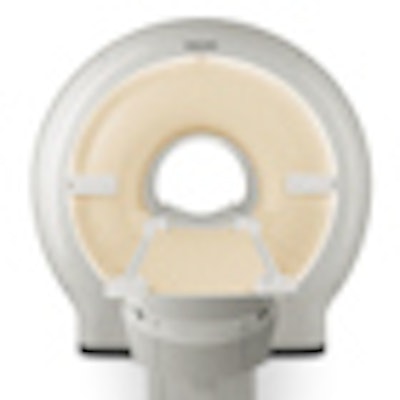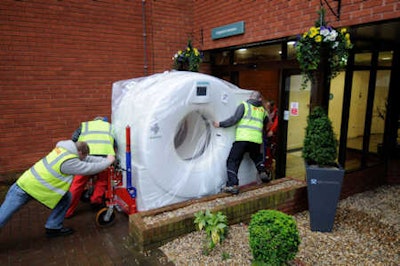
Half of England's high-end machines will need replacing over the next three years at a cost of 460 million pounds (523 million euros), and major changes in how CT and MRI systems are purchased will be vital for the successful management of the renewal process, according to a report published last week.
In its document -- "Managing high value capital equipment in the NHS (National Health Service) in England" -- the influential Public Accounts Committee is highly critical of how the Department of Health (DoH) has acquired equipment over the past few years. The systems for buying and managing equipment acquisition are fragmented and resources are wasted, and the DoH must look at how machines can be used more efficiently to make the best use of scarce resources, the authors noted.
"High-value equipment in the NHS -- like MRI and CT scanners -- is worth around 1 billion pounds (1.1 billion euros), but the way this equipment is bought and used is not providing value for money for the taxpayer," said Margaret Hodge, chair of the committee and member of Parliament. "We were shocked by the unacceptable response times for certain conditions. A modern NHS should not allow 50% of people who have a stroke to wait more than 24 hours for a scan. There are unacceptable variations between trusts in the number of scans per machine, from 7,800 to almost 22,000 a year, as well as opening hours and waiting times."
 New equipment will be arriving at hospitals in England over the next three years, but the authors of a new report think drastic changes should be made to how the acquisition process is organized. Image courtesy of Siemens Healthcare.
New equipment will be arriving at hospitals in England over the next three years, but the authors of a new report think drastic changes should be made to how the acquisition process is organized. Image courtesy of Siemens Healthcare.Listed below are the main findings of the report:
The DoH is not achieving value for money when it purchases high-value equipment, and there is no clear accountability for maximizing value in the purchase and use of such equipment. The DoH must clarify who will be accountable to the committee for ensuring value for money in the purchase and use of high-value equipment in the NHS.
The NHS lacks adequate information on MRI and CT activity to compare performance between trusts and to drive improvements in efficiency. Large variations persist in machine use, waiting times, opening hours, and access to scans. Neither hospital trusts (i.e., groups) nor commissioners are able to compare the throughput and efficiency of their MRI or CT machines because there is no central repository of data. The DoH has pledged to produce a dataset by April 2012 covering the use of MRI and CT machines.
Some trusts are not using framework agreements that would allow them to buy the same machines more cheaply. The NHS Supply Chain told the committee that it had operated framework agreements for MRI and CT since 2007, but that 20% of these machines were still bought through other routes. Some trusts remain unaware, or skeptical, of the benefits of buying through framework agreements and may choose more expensive procurement routes.
The NHS is not taking advantage of bulk buying to achieve discounts, which is a missed opportunity to contribute toward 20 billion pounds (2.3 billion euros) of efficiency savings. Trusts largely base procurement decisions on their immediate requirements and do not coordinate planning with other trusts across the NHS. The department concedes it has not done enough to get trusts to work together. NHS Supply Chain has so far placed no bulk orders for MRI and CT machines, despite having achieved volume discounts on other types of machines, including digital mammography and ultrasound.
The NHS Supply Chain's objective to save money is at odds with how it is paid. The DoH's contract with Supply Chain allows it to charge trusts a percentage of the equipment purchase price, which provides little incentive to negotiate lower prices with suppliers. The DoH should consider how its contract with Supply Chain might be changed so that the organization is financially rewarded for negotiating lower prices and generating savings.
It is unclear if the NHS can meet growing patient demand for scans and radiotherapy services at the same time as having to deliver substantial financial savings. The DoH has not assessed whether existing and new machines can be used more efficiently to meet rising demand to avoid unnecessary expenditure on underutilized equipment at a time when substantial wider savings are needed across the NHS. At a national level, the DoH, and in future the NHS Commissioning Board, should put in place the means to gauge whether capacity accurately matches needs. At a local level, commissioners should secure the right capacity in the right places to meet the needs of their populations.
To read a copy of the full report, click here.



















